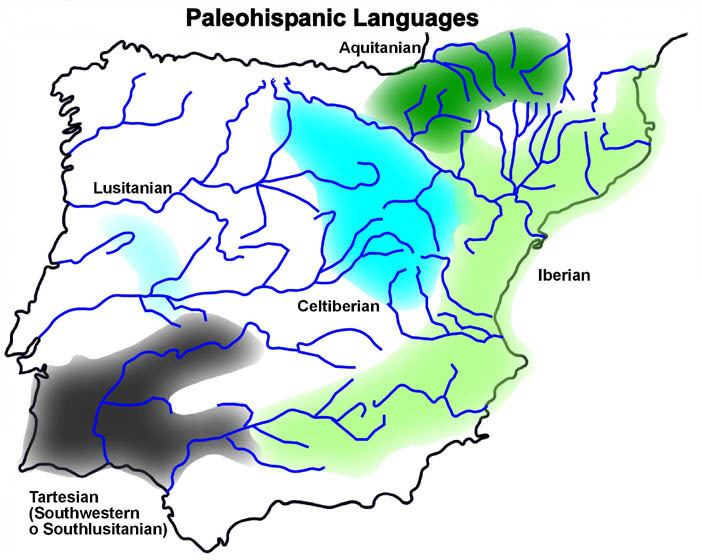 | ||
The Paleohispanic languages were the languages of the Pre-Roman peoples of the Iberian Peninsula, excluding languages of foreign colonies, such as Greek in Emporion and Phoenician in Qart Hadast. After the Roman conquest of Hispania the Paleohispanic languages, with the exception of Proto-Basque, were replaced by Latin, the ancestor of the modern Iberian Romance languages.
Contents
Languages
Some of these languages were documented directly through inscriptions, mainly in Paleohispanic scripts, that date for sure between the 5th century BC, maybe from the 7th century in the opinion of some researchers, until the end of the 1st century BC or the beginning of the 1st century AD.
Other Paleohispanic languages can only be identified indirectly through toponyms, anthroponyms or theonyms cited by Roman and Greek sources.
Classification
Of these languages, Celtiberian, Gallaecian, Lusitanian, and presumably Sorothaptic were Indo-European languages; Celtiberian and Gallaecian were Celtic languages, and Lusitanian might have been, but the hypothetical Sorothaptic was not. Aquitanian was a precursor of Basque, while Tartessian and Iberian remain unclassified.
